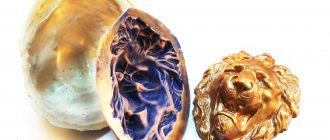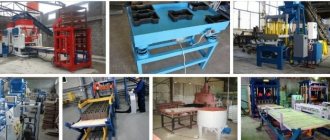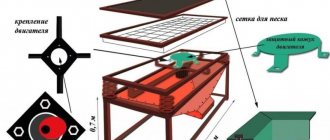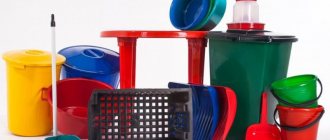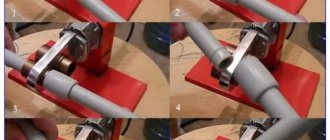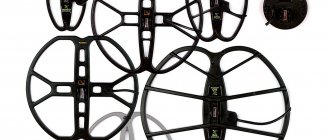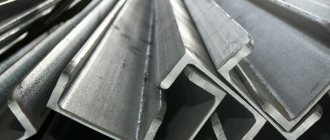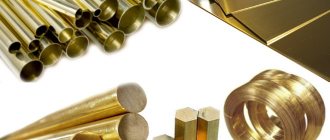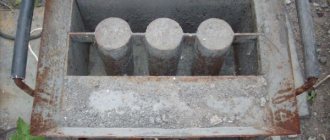In this article we will talk about the main technologies for manufacturing plastic products and help you choose the most suitable method for your purposes.
Today, the technology for producing plastic products is available not only to large industrial companies with huge circulations, but also to ordinary people, inventors and businessmen. Production technologies make it possible to create plastic parts or housings for any product in any quantity, which opens up new avenues for invention, creativity or business. For example, in the last article we wrote about the production of housings for quadcopters as a ready-made business idea, which almost no one is doing in Ukraine.
There are three technologies for manufacturing plastic products. All of these technologies make it possible to create high-quality plastic products, but they have some differences . Let us consider in detail each of the technologies, its advantages, disadvantages and areas of application. Our article will help you choose a technology for the production of plastic products specifically for your case.
The production of a plastic case is preceded by the creation of a 3 D model . more about the instrument housing modeling here.
Technology for the production of plastic products using 3D printing
Today, 3D printing technology has gained incredible popularity not only in the world, but also in Ukraine. Using a 3D printer, you can relatively quickly obtain a finished product and use it as a prototype, for an exhibition or presentation, or in scientific activities when modeling various processes. Printed products allow you to fully evaluate the functionality of the future plastic case without significant costs for launching multi-batch production. From this point of view, the technology for producing plastic products using 3D printing is an indispensable tool for assessing the profitability of a product. In addition, at this stage you can easily notice flaws or shortcomings in the functionality of the item and remake the 3D model.
The most common 3D printing method is FDM technology . This method is used in almost all areas of production. Printing is carried out layer by layer by entering the material (polymer filament) into the dispenser nozzle. FDM technology is limited by the size of the printer, but it is possible to create several parts of a product and then glue them together. When using this technology, it is necessary to create special supports if the product has large angles of inclination. After printing, these supports are removed. In addition, SLS (laser sintering of powder) and SLA (laser sintering of liquid photopolymer) technologies are widely used. Depending on the materials used, it is possible to obtain a housing from different types of plastic of any color.
Contact KLONA for 3D printing services . We will help you choose the most suitable 3D printing method, choose the material that is suitable for your product, and the equipment to implement your project.
3D printing refers to the piece production of plastic products, as it is an ideal option for producing cases or parts in small runs (up to 20 pieces).
Advantages of manufacturing products using 3D printing
- There are no preparatory steps : immediately after receiving the 3D model, it can be sent to the printer for printing.
- A very simple method that does not require additional equipment.
- Allows you to achieve fairly high accuracy of the product , which depends on the printer used.
- A large selection of materials and printing methods allows you to implement any project.
Disadvantages of 3D printing technology
- low productivity : printing one product can take several hours, when in other methods of manufacturing plastic cases it can take several seconds;
- limited dimensions of the resulting products : if the body is very large and must be solid, then 3D printing may not be suitable for such a request due to the limited size of the printer.
When creating plastic cases, the development of the industrial design of the product is very important. Industrial designers at KLONA create the most convenient and functional enclosures in terms of production technology and ease of use. Recommendations for case design can be found here.
Preparation of material for casting
At home you can create lids, toys, souvenirs, household utensils and other solid objects. For the procedure you need to prepare a number of materials:
- plastic for casting;
- melting container;
- master model;
- mold;
- lubricant
And other means.
For casting, plastic scrap can be used, which is crushed and melted. However, the melting point of all types of plastics differs, and only one specific type is used to create the blank. If this rule is not followed, the plastic melts unevenly and the parts created from it turn out to be inhomogeneous and bubbly.
At home, it is easier to use ready-made mixtures, such as liquid plastic or epoxy resin. The material does not require melting, it cooks and sets quickly, and products made from it are not inferior in quality to analogues. As an alternative, AKP-7 powder is also suitable, requiring mixing with a solvent. It takes longer to prepare plastic from it, but the result is pleasing.
However, if you still decide to melt scrap, for example, old boxes, buckets, dishes, you should follow safety precautions and carry out casting in ventilated, non-residential areas, since plastic fumes are toxic and dangerous to humans.
Technology for the production of plastic products: casting in silicone molds
This method refers to small-scale production and is best suited for the production of a small batch of products (from 20 to 1000 pieces).
To make silicone molds, you need a master model - a prototype of the future product. As a master model, you can use a ready-made plastic case or one printed on a 3D printer.
After receiving the master model, you can begin making a reverse silicone mold . Using adhesive tape, the parting lines of the mold are marked and the holes are closed. A gating system for supplying silicone is placed inside and formwork is installed. This technology for the production of a plastic product consists of pouring high-quality degassed silicone into a formwork within which the prototype is located. After this, the silicone hardens and the mold can be used for mass production. The process of making a silicone mold takes about a day.
The heated plastic is poured into a silicone mold, where a vacuum environment ensures the removal of gas and air bubbles that form when the plastic is mixed with the solvent. After the plastic has hardened, the mold is ready for the next casting. It is possible to significantly increase productivity by using several silicone molds simultaneously.
Advantages of the silicone molding method
- Silicone perfectly follows the shape of the master model, which allows you to achieve high accuracy .
- The method is characterized by a relatively low cost for small runs.
Disadvantages of using silicone molds
- using one silicone mold you can get up to 20 finished products , depending on its durability;
- limited dimensions of the resulting products: silicone molds are used to produce small and medium-sized parts (up to 30-40 cm);
- low production speed (plastic hardening can take several hours, which allows you to produce only 5-10 products from one mold per day);
- limited design - the minimum thickness of plastic products should be 0.1 mm.
What are plastics made of?
The raw materials for the vast majority of plastics are coal, natural gas and oil. From them, simple (low molecular weight) gaseous substances are isolated through chemical reactions - ethylene, benzene, phenol, acetylene, etc., which are then converted into synthetic polymers during polymerization, polycondensation and polyaddition reactions. The excellent properties of polymers are explained by the presence of high molecular weight bonds with a large number of initial (primary) molecules.
Some stages of polymer production are complex and extremely environmentally hazardous processes, so the production of plastics becomes accessible only at a high technological level. At the same time, the final products, i.e. Plastics are generally completely neutral and do not have any negative impact on human health.
Technology for the production of plastic products using plastic injection molding
This method is suitable for large-scale production (from 1000 parts) of plastic cases. When molding plastic under pressure, it is possible to obtain products of complex configurations from different materials (polymers, metal, etc.). The technology consists of casting heated material under pressure into molds.
A mold is a device that accurately replicates the design of the future product. High pressure is necessary to ensure that the plastic or metal fills all the small holes and recesses in the mold. An integral stage of mold manufacturing is mold design. This is much more difficult than creating a silicone mold.
the service of designing a mold for your product from KLONA. Our modelers are skilled in designing molds for complex housing configurations. Read more about the service here.
Molds are made of high-quality metal based on a 3D model. They are characterized by high durability, strength and precision. Molds are used in all types of industry to produce plastic, metal and other injection molded products.
Advantages of injection molding production
- Low cost of products for large quantities.
- There are no restrictions on the configuration of plastic products.
- Identity of all products and low percentage of defective products.
- Durability of molds (KLONA company provides a guarantee on molds for the entire period of cooperation).
- One mold can produce an unlimited number of products (any worn part can be replaced with a new one). In addition, there are multiple molds that allow you to produce dozens of products at a time (for example, pen caps).
- High productivity : the formation and cooling of one case occurs in less than one minute (depending on the configuration, it can be from 5 seconds). Read more about the types of molds here.
Disadvantages of mass production technology in the manufacture of molds
- the mold design process can take several weeks , which significantly delays the start of production;
- production and design of a mold even for a small plastic case will require large costs at the start of production .
Extrusion
Extrusion molding is used for the production of rods, pipes, hoses, plates, films, and shaped profiles (handrails, baseboards, etc.) from thermoplastics. The process is carried out on continuous screw presses (extruders). The casting mass is fed through the loading hopper into a heated screw cylinder, picked up by the turns of the screw (which in turn is heated) and moves along the cylinder, undergoing mixing and compaction. Compaction of the mass is achieved by reducing the pitch or height of the auger turns. A die with a hole corresponding to the cross-sectional shape of the product is installed at the outlet end of the cylinder. The molded product, emerging as a continuous strand from the die, is cooled. After hardening, it is cut into pieces of the required length.
Recently, heat resulting from friction of the mass against the cylinder walls and screw turns (“adiabatic extrusion”) has been used to heat the casting mass. This method simplifies the design of the press and increases the efficiency of the process.
The extrusion method is widely used for applying insulating sheaths to conductors, cables, etc. The conductors to be coated are fed from the coil through the central hole in the screw and are enveloped in the molding mass in the die.
To produce films, an angular head is installed at the output end of the press. The workpiece leaves the die in the form of a thin-walled pipe, is rotated at an angle of 90°, inflated with compressed air until the walls of the required thickness are obtained, and enters a wedge-shaped gap between two endless belts, where it is flattened. The resulting double tape is fed by exhaust rollers for cutting.
From pipes obtained by extrusion, hollow products (flasks, bottles, flasks, etc.) are made (by blowing in molds). The bottom of the products is welded.
